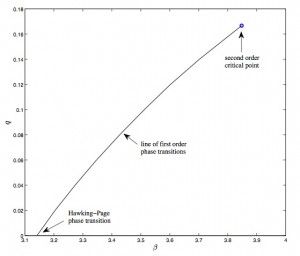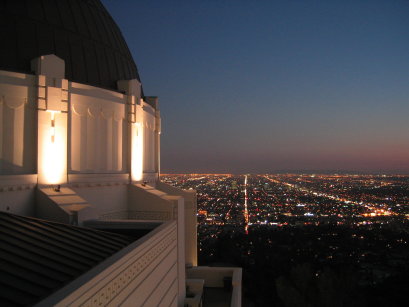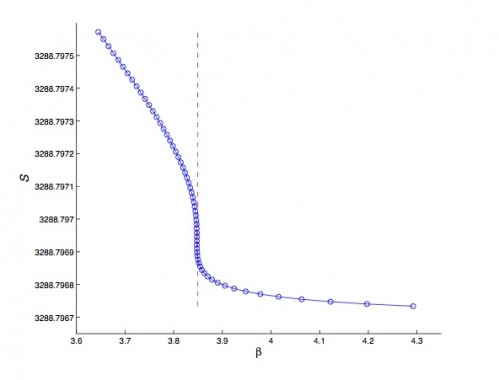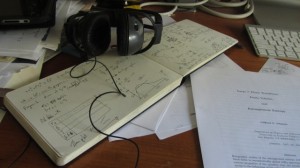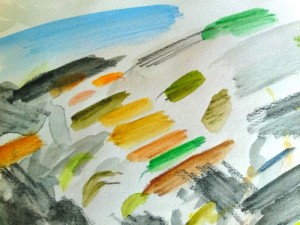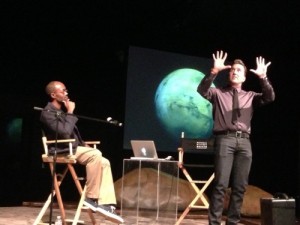Sunday Preparations…
This is the last day before the new semester starts here at USC. I’ve been wandering around the house a bit slowly. One reason is probably the excellent dinner party last night, which involved a lot of cooking for a lot of Saturday. That went well, and people seemed to enjoy themselves a lot. Good reason for a slow day the day after. The other reason is that it is simply nice to enjoy the calm before the storm of the new semester begins in earnest… So slow wandering around the house doing various simple tasks seems about right.
 At some point I decided to start looking for my materials for tomorrow’s class. I teach graduate level electromagnetism again this semester (part two of a two part course) and so it is a good time to start looking into old folders and so forth, trying to see what I’ll re-use, what I’ll re-do, and so forth. It seems that last Fall was the first time I did a complete scan of all my hand-written notes into pdfs to allow me to deliver them from my iPad, and so that’s good news right there. I can annotate right on top of those and add new pages if I want to… but it is nice to start with a base of good material to hand right at the starting gate.
At some point I decided to start looking for my materials for tomorrow’s class. I teach graduate level electromagnetism again this semester (part two of a two part course) and so it is a good time to start looking into old folders and so forth, trying to see what I’ll re-use, what I’ll re-do, and so forth. It seems that last Fall was the first time I did a complete scan of all my hand-written notes into pdfs to allow me to deliver them from my iPad, and so that’s good news right there. I can annotate right on top of those and add new pages if I want to… but it is nice to start with a base of good material to hand right at the starting gate.
While I’ve been looking through materials I’ve also been making bread. I’ll need some for the week, what with sandwiches and all that, and it is a also a pleasantly slow and endlessly rewarding thing to do. I decided to make a more moist final dough than I have in recent times. I think that this will give both a nicer crust and crumb. That blob in the bowl in the picture above left is the result of a very successful first rise. Most of bread making is waiting, and so it is perfect for when you are doing slightly mundane but time-consuming tasks like looking at old files of course notes.
 I rolled everything out into 12 rolls and a good slicing sandwich loaf and put them to rise again and went back to tinkering with files (analogue and digital). The picture to the right shows the result of that second rise. The oven is being preheated and they are nearly ready to go in. Already the smell is great, even though right now it is just a yeasty-doughy smell.
I rolled everything out into 12 rolls and a good slicing sandwich loaf and put them to rise again and went back to tinkering with files (analogue and digital). The picture to the right shows the result of that second rise. The oven is being preheated and they are nearly ready to go in. Already the smell is great, even though right now it is just a yeasty-doughy smell.
I’ve been wondering whether to jump ship and abandon Jackson as the main text for the class (shock! horror! – Jackson is a staple of so many graduate courses in physics) and go with something new. There have been two texts of note (that I know of) in the last couple of years that have risen to challenge Jackson’s supremacy, the one by Anupam Garg (“Classical Electromagnetism in a Nutshell”, Princeton), and the one by Andrew Zangwill (“Modern Electrodynamics”, Cambridge). My feeling is that both these books (I’ve looked at Garg more than Zangwill [update: see later remarks]) do a good job of making the subject seem alive and modern. Jackson has a great deal of useful material, presented in a firmly sensible way that is hard to argue with, and it will always remain a classic, but sometimes I think it suffers a bit from feeling somewhat old. I like that, for example, there’s a nice treatment of the beam of a laser in Garg as an […] Click to continue reading this post

